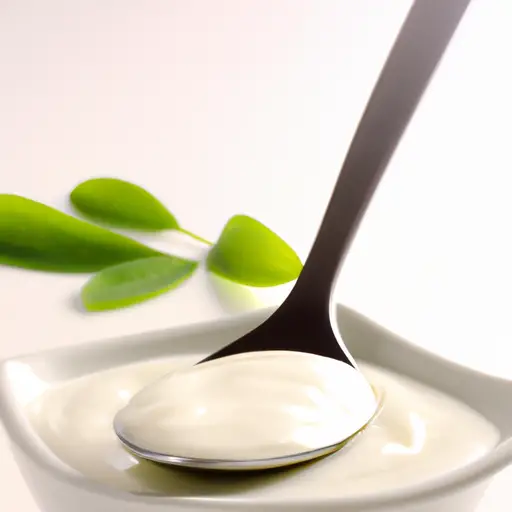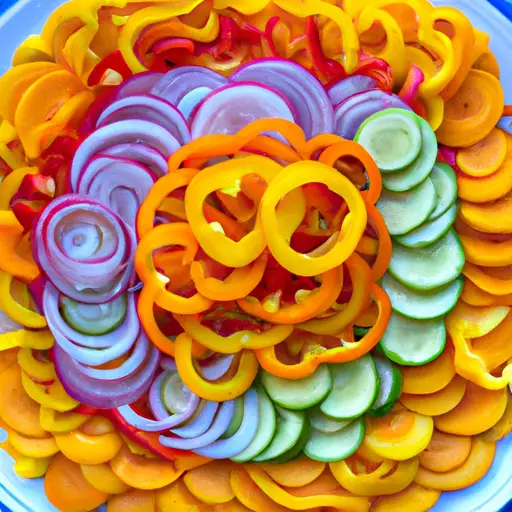The Best Dairy Alternatives to Reduce Inflammation
My Journey to Dairy Alternatives: An Introduction
Hey there! I’m excited to share with you my personal journey to using dairy alternatives. First, let me define inflammation – it’s the body’s way of fighting off harmful stimuli such as infections and injuries. However, chronic inflammation can lead to various health problems.
That’s where dairy alternatives come in. These are non-dairy products that can replace milk, cheese, and other dairy-based foods. I must say, switching to these alternatives has been a game-changer for me. Not only have I been able to reduce my inflammation, but there are plenty of other benefits too!
Let’s dive in!
Benefits of Dairy Alternatives
Let me tell you, switching to dairy alternatives has been one of the best decisions I’ve made for my health. Here are just a few of the benefits I’ve experienced:
Better Digestion: Dairy alternatives like almond milk and coconut milk are easier for your body to digest than dairy milk, which can be hard on your digestive system. I’ve noticed less bloating and stomach pain since making the switch.
Lower Cholesterol: Dairy milk is high in cholesterol, which can contribute to heart disease. Many dairy alternatives, like soy milk and almond milk, are cholesterol-free, which can help lower your overall cholesterol levels.

Clearer Skin: Dairy products have been known to contribute to acne and other skin issues. Since switching to dairy alternatives, I’ve noticed clearer, brighter skin with fewer breakouts.
Improved Nutrition: Many dairy alternatives are fortified with vitamins and minerals like calcium, vitamin D, and B vitamins. This can help you get all the nutrients you need, without the added hormones and antibiotics found in dairy milk.
Overall, I’ve found that making the switch to dairy alternatives has been a total game-changer for my health. If you’re struggling with digestion issues, high cholesterol, or skin problems, it might be worth giving dairy alternatives a try!
Discover the Different Types of Dairy Alternatives!
If you’re interested in making the switch to non-dairy milk alternatives, you might be wondering what your options are. There are plenty of different types of dairy alternatives to choose from, each with their own unique benefits and flavors. Let’s explore some of the most popular options!
Soy Milk
Soy milk is one of the most well-known dairy alternatives, and for good reason. It is an excellent source of protein and is often fortified with vitamins and minerals. Soy milk has a mild, nutty flavor and is great for baking or cooking, as it doesn’t have a strong taste.
Almond Milk
Almond milk has a slightly sweet, nutty flavor and is low in calories. It is a good source of vitamin E and has a similar texture to cow’s milk, making it a popular choice for coffee and smoothies.
Coconut Milk
Coconut milk has a rich, creamy texture and a subtle coconut flavor. It is high in healthy fats and is a good source of iron and potassium. Coconut milk is often used in curries and soups, but can also be used in sweet dishes like desserts and smoothies.
Oat Milk
Oat milk is a newer addition to the dairy alternative lineup, but it has quickly gained popularity. It has a mild, slightly sweet flavor and is a good source of fiber. Oat milk is great for baking, cooking, and adding to coffee.
Rice Milk
Rice milk has a sweet flavor and a thin, watery texture. It is low in fat, cholesterol, and calories. Rice milk is a good choice for people with allergies or sensitivities to nuts and soy.
Choosing a dairy alternative may seem overwhelming at first, but with so many options available, it’s easy to find one that suits your taste and dietary needs. Experimenting with different types of dairy alternatives can help you find a new favorite and make the switch to non-dairy milk a breeze!
Tips for Making the Switch to Dairy Alternatives
Okay folks, so you’ve decided to make the switch to dairy alternatives. Good on you! It can be a bit overwhelming at first, but don’t worry, I’ve got some tips to make the transition a breeze.
Start Slow
You don’t have to jump into the deep end right away. Start by switching out one dairy product at a time. Maybe it’s your morning latte or your cereal milk. Once you’re comfortable with that, move on to other products.
Read Labels Carefully
Not all dairy alternatives are created equal. Some may contain added sugars, thickeners, or other ingredients that you don’t want. Be sure to read the labels carefully to make sure you’re getting a high-quality product.
Experiment with Different Types
There are tons of dairy alternatives out there, from soy milk to oat milk to almond milk and beyond. Experiment with different types to find the one(s) that work best for you. You may find that you prefer certain types for certain uses (e.g. almond milk in coffee, coconut milk in smoothies).
Don’t Be Afraid to DIY!
You can make your own dairy alternatives at home! It’s cheaper and allows you to control the quality of ingredients. Check out this great recipe for homemade almond milk to get started.
Have Fun with It!
Switching to dairy alternatives doesn’t have to be a chore. Have fun with it! Try new recipes, experiment with different types, and don’t be too hard on yourself. It’s a journey, not a destination.
Concluding Thoughts on Dairy Alternatives
After exploring the benefits and types of dairy alternatives, I am convinced that making the switch is a smart and healthy choice. Not only are dairy alternatives often easier to digest, but they can also provide similar nutrient profiles without the cholesterol found in dairy products. Plus, there are so many delicious options available, from almond milk lattes to coconut milk ice cream, that there’s no reason to miss out on your favorite dairy-based dishes.
However, it’s important to note that not all dairy alternatives are created equal. Some are higher in sugar or fat than others, so it’s important to research the best options to suit your nutritional needs and taste preferences. Additionally, if you have a nut allergy, dairy alternatives like almond milk may not be the best choice for you.
When making the switch to dairy alternatives, it’s also important to be patient with yourself. Some alternatives may taste different at first, so don’t give up after one sip. Experiment with different brands and types until you find the perfect match. And don’t forget to have fun with it! Trying new foods and recipes can be a great way to expand your palate and discover new favorites.
All in all, I highly recommend giving dairy alternatives a try. Not only can they improve your digestion and health, but they can also be a delicious and exciting addition to your diet. So go ahead, pour yourself a glass of oat milk and enjoy!






